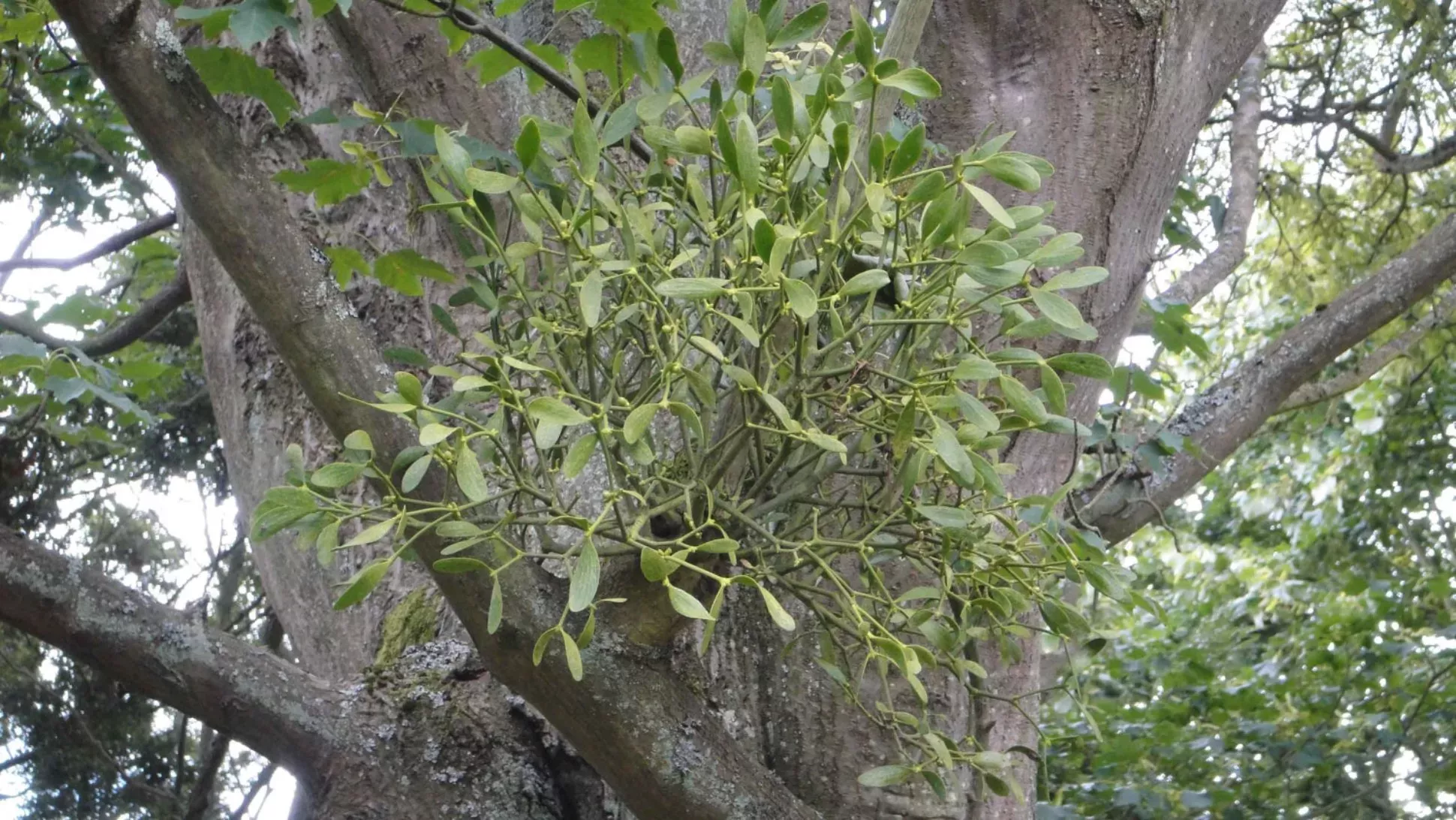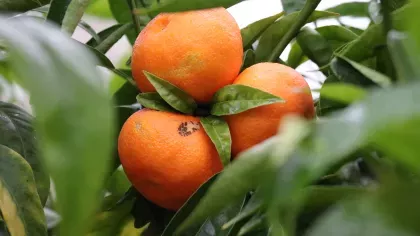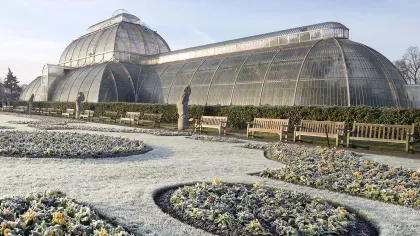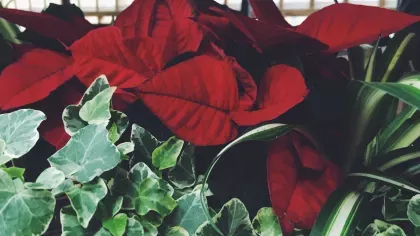9 December 2020
Surprising facts about mistletoe
Find out the fascinating way mistletoe grows and how this festive favourite became a popular Christmas decoration.

With snow white berries and evergreen leaves, mistletoe is a distinctive plant with a romantic reputation.
The tradition of kissing under the mistletoe is what this plant is best known for.
Find out why it relies on other plants to grow, where mistletoe myths come from, and how the tradition gained popularity.
Mistletoe relies on other trees to survive
Mistletoe isn't like a normal plant.
It's parasitic, which means it has to grow on other trees to survive. It grows in round clusters, giving it the appearance of sprouting magically from tree branches.
It takes the nutrients and water from the tree it grows on. Although it doesn't usually kill the tree, it can weaken it.
Mistletoe can also make some of its own food as it has evergreen leaves which photosynthesise to create additional energy for the plant.
Its favourite host trees include apple, hawthorne and poplar trees. It prefers to grow on trees in open areas with plenty of light, rather than in dense woodlands. Keep a look out for mistletoe in parks, gardens and orchards.
Did you know?
Across the world there are more than 900 mistletoe species. Viscum album is the only species native to the UK.

Birds give a helping hand
One of the ways plants disperse their seeds is through animals and birds.
Some plants enclose their seeds inside fleshy edible fruits that are appealing to hungry animals.
The white, sticky berries of mistletoe mean they are get easily stuck to feathers and beaks. This makes it easier for them to spread as the birds fly from tree to tree.
Once the mistletoe seeds are deposited on trees, if they take hold they will germinate and start growing on their host.
Mistle thrushes and blackcaps are bird species that like to eat mistletoe berries and are most efficient at spreading the seeds.

The origin of mistletoe traditions
Kissing under the mistletoe is a well known seasonal tradition. From Justin Beiber's smash hit to Harry Potter's first kiss, it has been cemented in festive pop culture. But where does the tradition of decorating the house with mistletoe originate?
The origins of mistletoe meaning appear to come from a story in Norse mythology.
In one story, Balder (the son of Odin, the god of war and death) is killed with an arrow made of mistletoe. Balder's mother, Frigg, is so upset that her tears turn to white berries which cover the plant and symbolise her love for him.
Interpretation of these legends vary, but it seems this was the starting point for mistletoe's association with love. There are records of mistletoe legends from different cultures, such as the Celts who hung sprigs above the door.
Its evergreen leaves and ability to bloom in winter mean the plant has long been seen as a symbol of eternal life and vitality.

Made famous in literature
In the 19th century, mistletoe in literature led to a boom in the plants popularity in England and America.
Characters in The Pickwick Papers by Charles Dickens and Washington Irving's short stories are described kissing under the mistletoe.
The custom at the time was that a man was able to kiss any woman underneath the mistletoe, and a berry would be picked with each kiss. It was good luck to accept and bad luck not to.
Times may have changed since then, but the Christmas charm of mistletoe lives on.
Did you know?
Despite its romantic reputation, mistletoe is actually poisonous to humans. It contains a toxic substance called phoratoxin, which is particularly concentrated in the leaves. If you're decorating with it, keep it away from pets and children.



